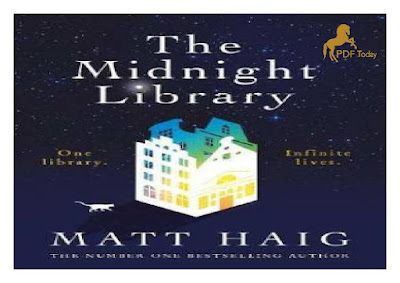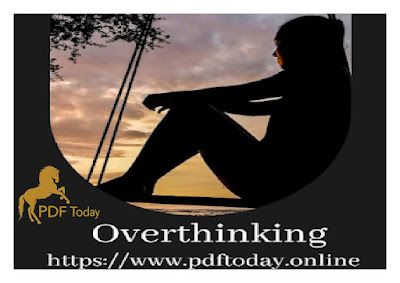According to the book, understanding how these two modes of thinking work can help us make the right personal and professional decisions. The author goes on to explain how we should not rely on our intuition or how we can benefit from slow or fast thoughts. He shows us how our choices are made and how we can make decisions intentionally.
Because you are a psychologist. Or because you're not. Because you are too intrigued by the irrationality of the rational human mind. Or, because you just think you already know everything about it.
Inquisitive, judgmental, ignorant, analyst, indifferent. Thinking very fast and slow will grab your attention, starting with the first page. Physicians have wide-ranging labels for the people they serve. Treatment of diseases covers various aspects such as – identification of symptoms, possible causes, treatment etc.
After all, conducting a successful procedure requires detailed analysis and diagnosis of everything. Furthermore, to put yourself in a position where you can understand how particular individuals pass judgments is a challenge.
Two systems that control our mental activities Our mental activities are governed by two different systems - the instinctual (System 1) and the rational (System 2).
The spontaneous system is fast and produces almost instantaneous responses. The second system is programmed to think, analyze, evaluate, and then react. It is common to believe that our decisions are guided by a rational system. But the truth is that the intuitive system, which is virtually involuntary, is the basis for most of our choices, even the rational systems we use.
System 1 is involuntary thinking, which uses contextual knowledge to draw conclusions. For example, when you see 3×3, you automatically think of the correct answer.
You have these automatic responses several times a day, and most of the time you don't even know they affect your thoughts. The working systems are the results of 1. Although you can control if you want, some activities work automatically for System 1, such as blinking or walking. How Both Systems Affect Our Decisions
You are not aware, but your mind is working with both systems.
And indeed, when you do any mental activity, it is very difficult to detect whether System 1 or System 2 is in action.
Remember this: System 1 runs on autopilot all the time, and System 2 must be called upon to act.
System 1 gives you signals (impressions, feelings, intuitions) based on the thoughts and beliefs formulated by the system. When System 1 can't solve a problem, it tells System 2 to help. Why is it important to know the difference between systems? System 1 can jump to conclusions and make mistakes in many situations.
Calm down your thoughts with System 2 and you'll increase your chances of not only thinking more accurately and appropriately, but thinking more efficiently. For example, when you're looking for a relative at the airport, only use System 1 So you look at everyone who crosses your path, looking for a familiar face. But if you use System 2, you can intentionally filter out people who have dark hair or glasses, because your relative doesn't have any of these characteristics. In addition, the search is faster and more efficient.
Our mind is always hopeful even though there is no guarantee of good results. Even when we take a risky attitude, we can exhibit self-confidence because of our misplaced optimism. This hinders our rational ability to calculate risk from past mistakes or from the advice of experts in the field.
This sense of delusional optimism prevents us from taking enough time and planning. Optimism gives us the false impression that we have a lot of control over the situation, but this may not be true.
While a lack of objective thinking is dangerous in many situations, content helps us make good decisions and set things right. Think of subjectivity as the element that keeps things balanced and puts them in perspective. Note that looking at this situation in a purely objective way may change our perspective: imagine that a person earning $100 per week loses a $50 bill. $50 represents a significant loss for him.
If someone who made $30,000 per week lost the same $50, this loss would be relatively insignificant. It is necessary to look at this situation in a subjective way because people's perspectives are very different.
What you need to learn is that pure logic and facts should not always be used to reach conclusions or decisions. A person's circumstances, mood, and other factors must also be considered.
"Thinking Fast and Slow" is a one-time Blue-Moon variety book. Its power questions judgment sensibilities, and puts words into action.
Emotions play an essential role and influence our decision-making process. Stereotypes, assumptions, and intuitions are very common methods of decision-making and show the effect these heinous processes have on our choices.
The System 1 thinking process calculates losses, gains, risks and rewards, and incorporates emotion into the results.
Whether out of fear or regret or the belief that we are experts, our emotions influence our decisions in meaningful ways. Emotions influence our judgments and judgments in other ways as well.
We can respond to different situations depending on how they are presented, even if it is unconscious. This means that the situation or event that has the most emotional connection with us is usually the one that Captures our attention. This is because the condition invokes an associative memory via System 1.
Our brain processes what associative memory communicates and makes decisions and not all important facts may have the importance they should have.
For example, doctors may be more likely to choose a procedure if they know the survival rate is 90% than if they know the mortality rate is 10%.
In this case the association made is alive, which is a positive outcome for the doctor. This system gives more weight to positive decisions. We must force our System 2 to analyze real facts to make our decisions, rather than letting our emotions take over. Only in this way can we overcome this influence in our choices.
When we are confronted with a situation, the typical human response is the easiest way to choose, which is to provoke our system.
1. Our brain follows the path that represents the least resistance. So when you encounter a situation that seems different, your brain will accept a less confusing explanation. Doubting something or not believing in something is an act that requires a lot of effort for our mind. So System 1 tends to present the situation in the best possible way: in a way you can believe.
System 2 is usually more functional in anxious individuals. These people can over-think and over-analyze everything and doubt every decision.
Nevertheless, these individuals also depend on System 1 in many situations, even if they are not aware of it.
This is what happens when they choose the easy path. For example, when you have two different possibilities of routes to a hotel, you instinctively choose the most familiar route. The urge to choose the easiest route may be that our first instinct is naive.
System 2 only comes into play when you are in a very confusing situation or when you discover that a belief is false. It slows down your mental process and generates analytical thinking and logical reasoning. We need to encourage our mind to look beyond influences and patterns.
Observing the facts available, ignoring feelings, impressions, and hunch.
It's not like everything that happens makes sense, and we can't always give a rational explanation for everything. But our brain tries to make up a story to make each situation more plausible. The fact is, in order to understand things easily, our brains create illusions. The information we perceive in reality is actually an imagination created by the mind.
This invented story can then become what we call "intuition". As a result of this strong feeling, you may begin to take a stand in a certain position, which is completely contrary to the actual facts. or may be wrong.
However, this feeling or intuition stems from a great experience in your area of expertise. For example, a very experienced physician may instinctively "feel" that his patient has a particular problem. This may not be obvious to another physician who is relatively new to the practice.
This type of intuition arises from the reflexes of the mind, from the instinctive recognition of familiar patterns. Intuition can be trusted when it comes to an expert in the field, who provides enough forecast to make such standards.
In the case of a physician who has seen many patients with similar symptoms and these experiments lay the groundwork for an intuitive diagnosis.
We should rely on our intuition only when we have a solid basis to trust our feelings. For example, a mother's intuition can be trusted because she knows her child well. Conversely, an innate feeling that you know someone might be the victim of a car accident is probably just an irrational fear.
Our mind is a mystery, but that doesn't stop you from investigating it.
We are made up of two distinct beings - the experience we go through (what you are experiencing) and the memories we later create and retain from the experience (the memory that happens when it happens). This duality causes cognitive confusion in which the actual experience we have can be obscured by the memory left behind.
Usually, you'll remember that a terrible dinner ended as a terrifying experience, even if the first hour before the dreadful ending was incredibly romantic. A great meal that was accompanied by a great dessert, a great meal As may remain in your memory. A peculiarity of this estimate is that the duration of the experience does not seem to matter.
The memory of the experience left behind can color the experience in all respects. Specifically, the last part of the experience is what is left in our mind, and it is what determines how we view that experience as a whole. It is important to say that this conclusion affects how we make future decisions. In fact, these future decisions are being made from the memories of our experiences, not our actual experiences. Looking at it differently, we can see how it holds a powerful tool in our hands: memories.
By making sure that we consistently form valuable memories of our experiences, we can encourage our brains to come out of this memory-over-experience illusion. As you begin to become aware of your experiences, so do you. As you go through them, you begin to consciously reflect on what you are going through. By doing this, you create a set of memories that are more in sync with the actual experience and therefore more of what happened. represent more faithful. These memories now form a good basis for making future decisions.
This is an important factor to remember – balancing our memories (eg, the version of what happened) and our experiences (eg, what actually happened) is very important. Choosing the right balance between these two is exactly what we should do to improve our ability to make the right decisions and to subdue influences that can distort our decision making abilities. Nothing is lost The thinking-pattern is the result of many habits adopted by us over a period of time. Daniel Kahneman discusses some essential topics and separates creating value from "stealing" value. But, let's start from the top.
And if that's not enough, let's look around and think about how Fast & Slow was rated. It was chosen as one of the ten best books of 2011 by The New York Times Book Review, and one of The Wall Street Journal's Best Nonfiction Books. To be honest, first I read Thinking Fast and Slow, and then I checked the references. The biggest thing was that, once I started reading it, I lost track of time. And that's a very good thing. This is what I call a good reading.
At the core of "Thinking Fast and Slow," I found a great theme: human irrationality. Around this topic, you'll find many intriguing key-concepts like overconfidence, cognitive biases, or the peak-end rule.
What particularly caught my attention was the analysis on overconfidence. The main message about it is this: no one, not even experts, can escape this trap. We all suffer from an exaggerated sense of how well we understand the world.
When reading "Thinking Fast and Slow" you will be taken to three levels: "cognitive bias" - meaning that unconscious errors of reasoning distort our judgment of the world. This theory follows from the "anchoring effect" which describes our tendency to be influenced by irrelevant numbers that we are exposed to. Decision Making - Do People "Maximize Utility"? Under uncertain circumstances people behave differently from the way the economic model has traditionally been assumed; So, in this context, you will be dealing with a new concept: "probability theory." "Hedonic Psychology": The Science of Happiness, Its Nature, and Its Causes. Right from the start, the title will intrigue you. Voluntarily or not, I'm sure you're looking for information on this "thinking fast, slow"?
Are you still confused about the game of this system? You can also check out "Linda's Problem Experiment". You will thoroughly explain these controversial systems in a very practical context. We only give you a small clue as to what this experiment is all about: a simple question is a substitute for a complex one. Starting from this point, you will soon be final involved himself in an interesting debate. This was the basis for the experiments of rigorous colonoscopy.
After reading about it, your pupils will probably increase significantly and you will feel a strange pain in your stomach. (Don't worry. You can call it empathy. It usually happens to any human being). After reading about these, take a deep breath. And try to see the message behind the text. I'm sure you now realize the metaphor of this example and how it relates to life.
While you will scroll through the chapters, question after question will parade through your mind: Can we trust our intuition? Can we tap into the benefits of slow thinking? How do we make choices both in business and in personal life? And the answers will come one by one.
When you're reading "Thinking Fast and Slow," I'm sure you won't agree and disagree with Kahneman from time to time. And I am sure you will feel the need to express it as loudly as you can.
Take your time, examine the nuggets, and spend a few moments thinking about this argument about the human mind.
Download Book in PDF















0 Comments